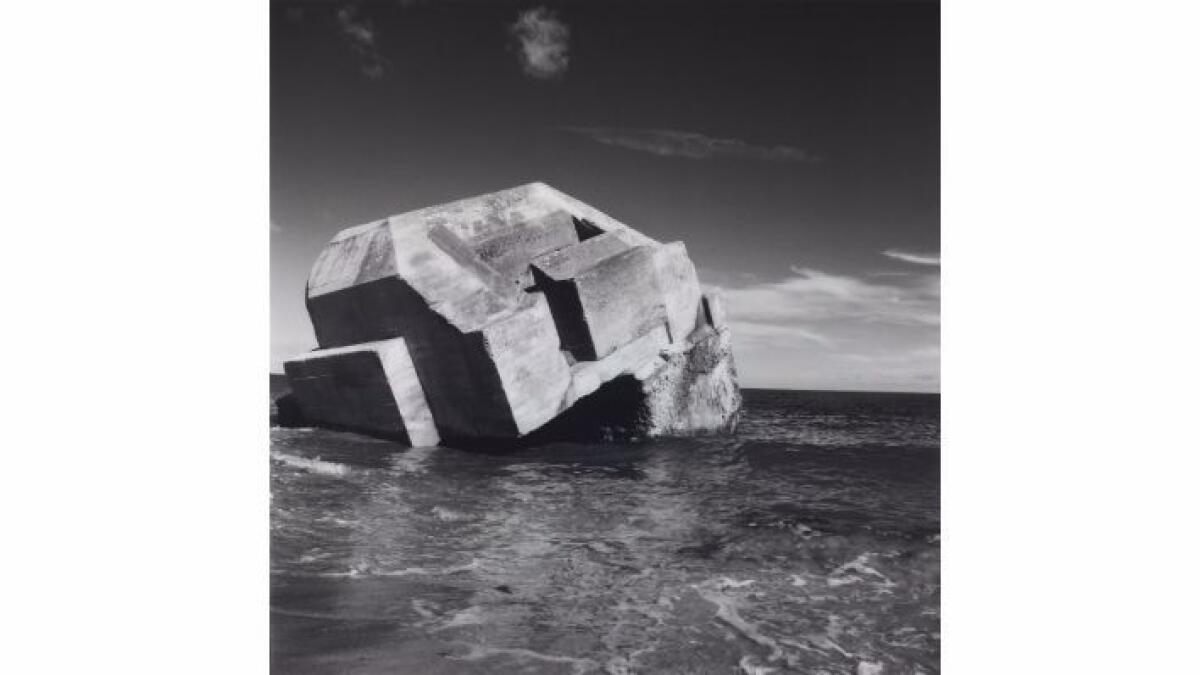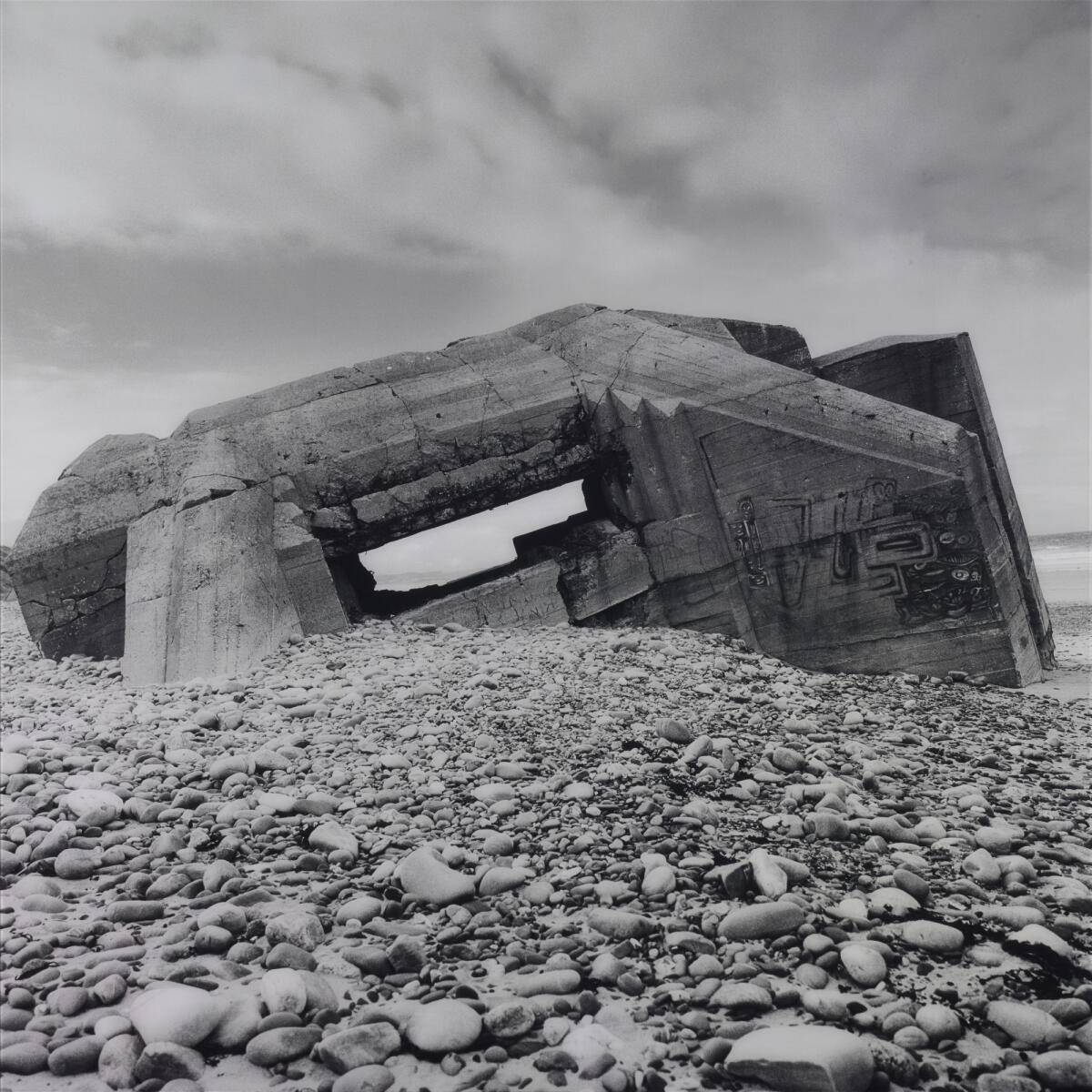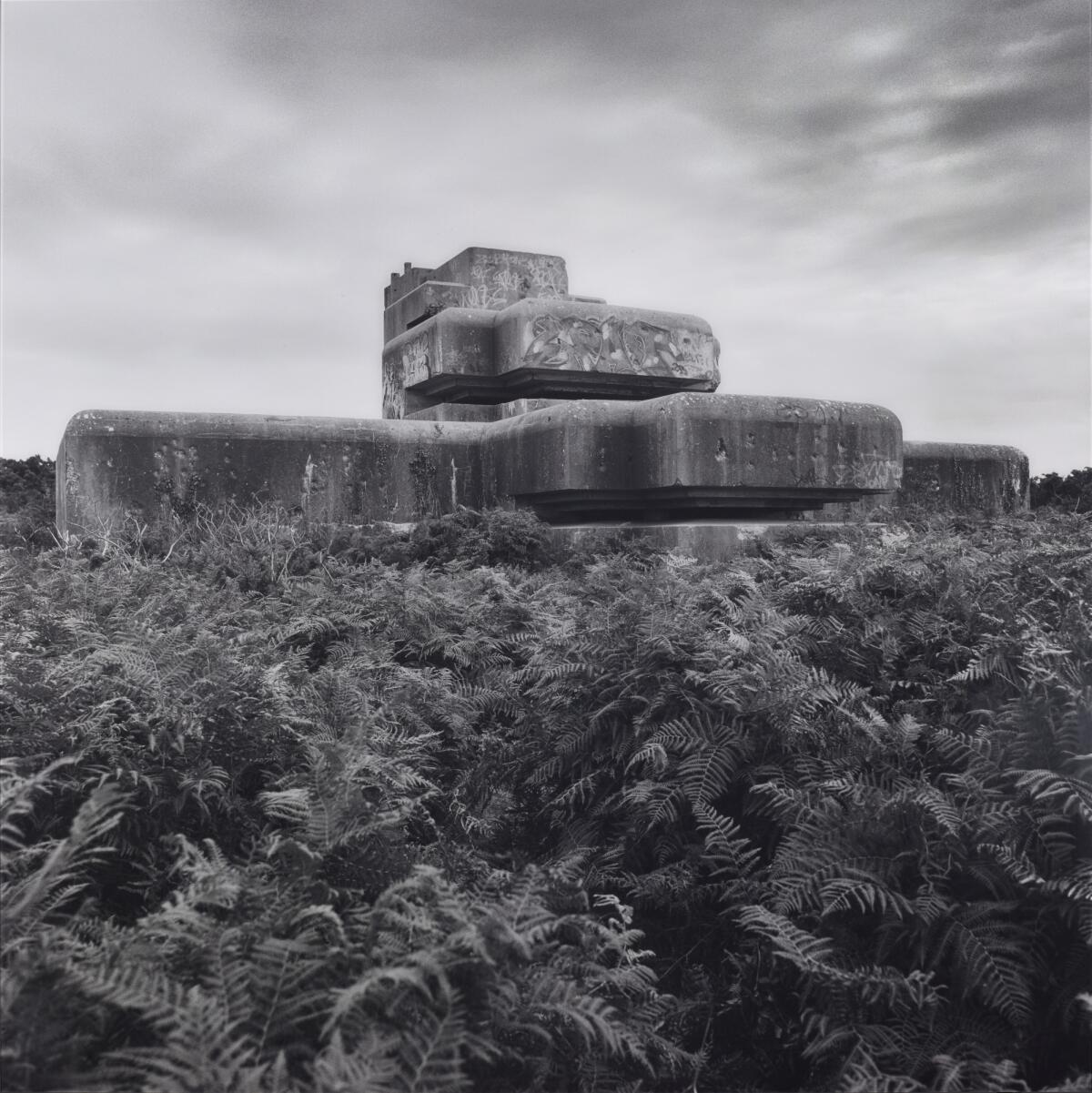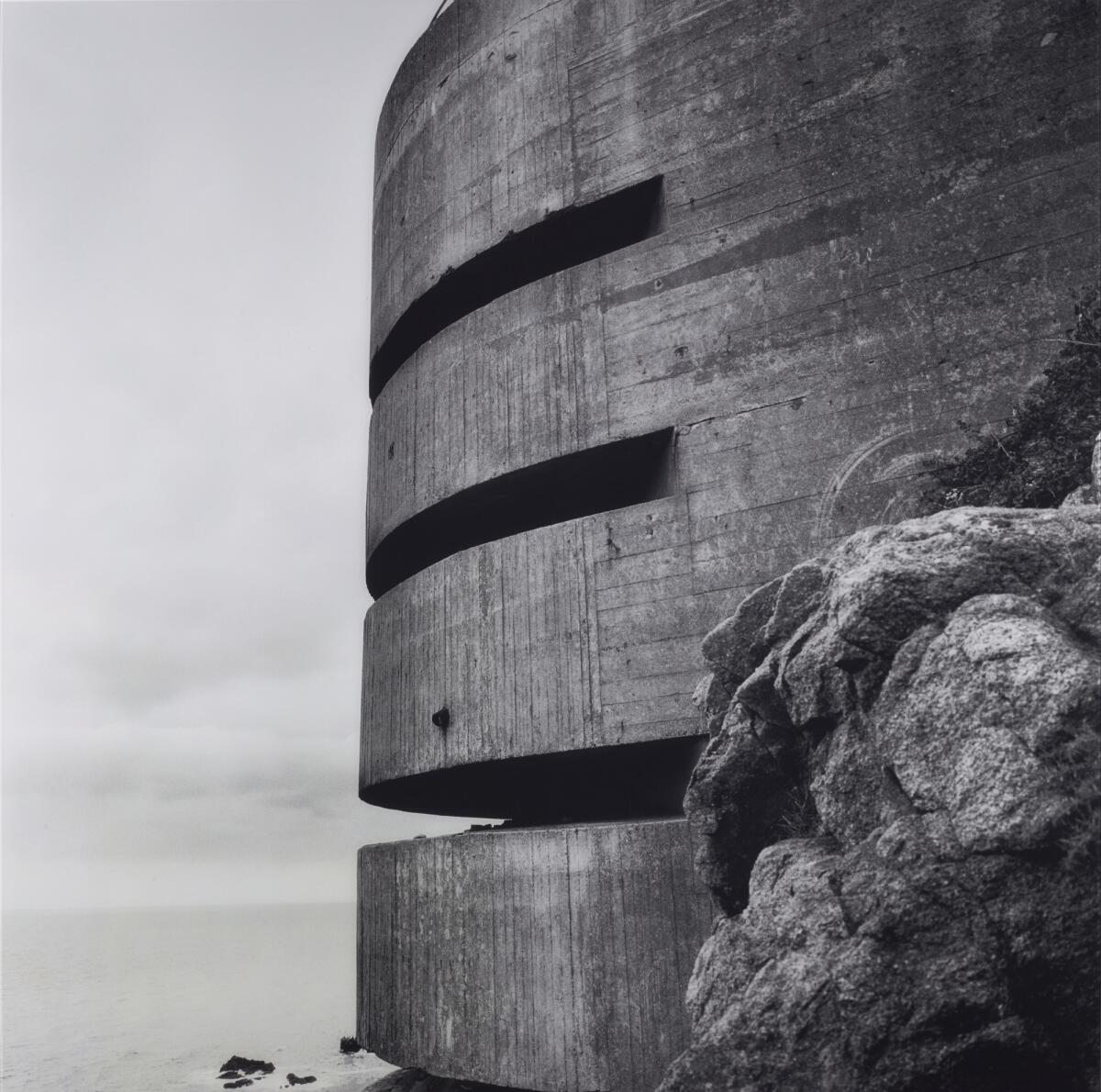WWII coastal bunkers: Once symbols of strength, now aliens of the sea

Lying on its side on Omaha Beach in France, the toppled and cracked structure pictured in “Casemate SK667” was among the first of Adolf Hitler’s bunkers to fall on D-Day. Not far away in Cherbourg, the abandoned gun battery pictured in “Sea Eagle” resembles a prehistoric creature with a concrete beak and wings spread to fly.

Beginning in 1940, Hitler ordered the construction of these and hundreds of other reinforced concrete bunkers to fortify the European coast against an Allied invasion. Seventy-seven years later, those Brutalist-style bunkers that stretched 1,600 miles from Norway toward Spain are slowly crumbling into the sea.
British twin sisters Jane and Louise Wilson have spent three decades photographing sites that shaped 20th century European history. Four of their large-scale photos of the

SIGN UP for the free Essential Arts & Culture newsletter »
“Having black and white photographs gives a sense of removal and mortality,” curator Virginia Heckert said. “With half the composition in the foreground, you feel like you can enter the pictures.”
Graffiti on the bunker pictured in “Sea Eagle” evokes “the preciousness of inlaid jewels associated with masks,” Heckert said, “It has a totemic feel.”
Three screens at the center of the gallery floor compare footage of the bunkers with video of vampire squids, which have their own defense mechanisms to scare away enemies.

Support coverage of the arts. Share this article.
MORE ART COVERAGE:
LACMA plans radical change for how we see the permanent collection
Marciano art review: Foundation proves the potential and the pitfalls of a vanity art museum
Marciano architecture review: Former temple loses some personality in stylish redesign
The biggest entertainment stories
Get our big stories about Hollywood, film, television, music, arts, culture and more right in your inbox as soon as they publish.
You may occasionally receive promotional content from the Los Angeles Times.



